Related Research Articles

Antoine-Laurent de Lavoisier, also Antoine Lavoisier after the French Revolution, was a French nobleman and chemist who was central to the 18th-century chemical revolution and who had a large influence on both the history of chemistry and the history of biology.

The University of Paris, known metonymically as the Sorbonne, was the leading university in Paris, France from 1150 to 1970, except for 1793–1806 during the French Revolution. Emerging around 1150 as a corporation associated with the cathedral school of Paris, it was considered the second-oldest university in Europe.

The Académie Julian was a private art school for painting and sculpture founded in Paris, France, in 1867 by French painter and teacher Rodolphe Julian (1839–1907) that was active from 1868 through 1968. It remained famous for the number and quality of artists who attended during the great period of effervescence in the arts in the early twentieth century. After 1968, it integrated with ESAG Penninghen.

Antoine François Fourcroy was a French chemist and a contemporary of Antoine Lavoisier. Fourcroy collaborated with Lavoisier, Guyton de Morveau, and Claude Berthollet on the Méthode de nomenclature chimique, a work that helped standardize chemical nomenclature.

Marguerite Catherine Perey was a French physicist and a student of Marie Curie. In 1939, Perey discovered the element francium by purifying samples of lanthanum that contained actinium. In 1962, she was the first woman to be elected to the French Académie des Sciences, an honor denied to her mentor Curie. Perey died of cancer in 1975.

Carl Christian Hillman Jacobsen was a Danish brewer, art collector and philanthropist. Though often preoccupied with his cultural interests, Jacobsen was a shrewd and visionary businessman and initiated the transition of the brewery Carlsberg from a local Copenhagen brewery to the multinational conglomerate that it is today.

Charles Adolphe Wurtz was an Alsatian French chemist. He is best remembered for his decades-long advocacy for the atomic theory and for ideas about the structures of chemical compounds, against the skeptical opinions of chemists such as Marcellin Berthelot and Henri Étienne Sainte-Claire Deville. He is well known by organic chemists for the Wurtz reaction, to form carbon-carbon bonds by reacting alkyl halides with sodium, and for his discoveries of ethylamine, ethylene glycol, and the aldol reaction. Wurtz was also an influential writer and educator.

Eugène-Anatole Demarçay was a French chemist who designed an apparatus to produce a spark using an induction coil and used it to generate the spectra of rare earth elements which he examined using spectroscopy, thus detecting the element europium in 1896, and isolated it as the oxide europia in 1901. He helped Marie Curie to confirm the existence of another new element, radium, in 1898.
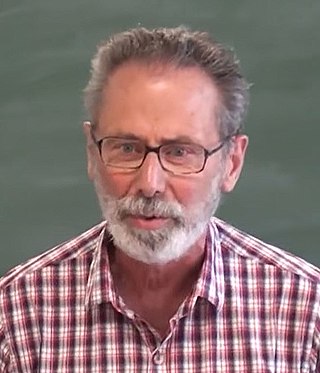
Yves F. Meyer is a French mathematician. He is among the progenitors of wavelet theory, having proposed the Meyer wavelet. Meyer was awarded the Abel Prize in 2017.

Pierre Jean Robiquet was a French chemist. He laid founding work in identifying amino acids, the fundamental building blocks of proteins. He did this through recognizing the first of them, asparagine, in 1806, in the industry's adoption of industrial dyes, with the identification of alizarin in 1826, and in the emergence of modern medications, through the identification of codeine in 1832, an opiate alkaloid substance of widespread use with analgesic and antidiarrheal properties.
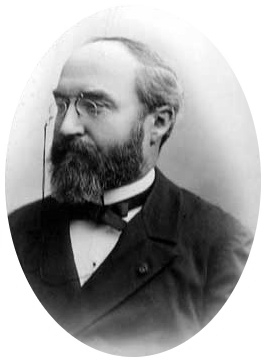
Marie Adolphe Carnot was a French chemist, mining engineer and politician. He came from a distinguished family: his father, Hippolyte Carnot, and brother, Marie François Sadi Carnot, were politicians, the latter becoming President of the third French Republic.

Ludwig Lewin Jacobson was a Danish surgeon.
Jean-Henri Humbert was a French botanist born in Paris.
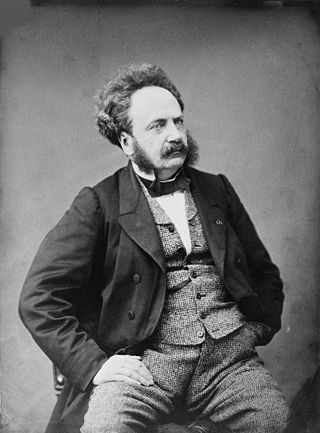
August André Thomas Cahours (1813–1891) was a French chemist and scientist whose contribution to organic chemistry was one of the greatest in history. He discovered, among other things, the processes of synthesis of several chemical molecules, including toluene, xylene, several organo-magnesiums, and derivatives of phosphine and arsine.

François Charles Léon Moureu was a French organic chemist and pharmacist. In 1902 Charles Moureu published Notions fondamentales de chimie organique, translated into English as Fundamental principles of organic chemistry (1921).
Friedrich Bernhard Westphal was a German-Danish genre painter and illustrator. He was also known by his nickname Fritz Westphal.
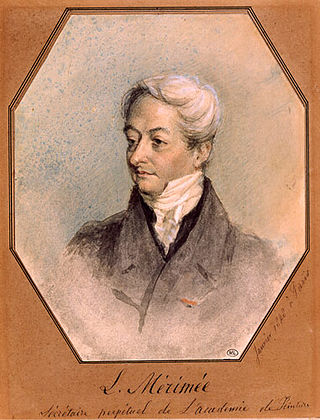
Jean-François Léonor Mérimée was a French writer, painter and chemist, specializing in pigment color in painting and decorative art. He was the father of the famous author, Prosper Mérimée.

Bernard Meunier is a French chemist and academic. He has been a member of the Académie des sciences since 1999.
Jacques Livage is a French chemist holding the chair of condensed matter chemistry at the Collège de France and a member of the Académie des sciences.
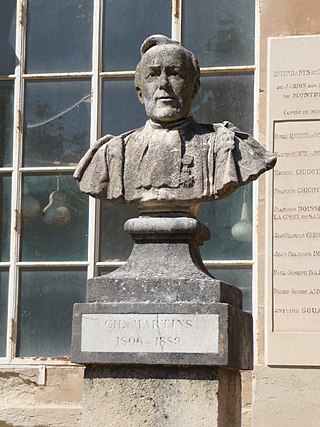
Charles Frédéric Martins (1806–1889) was a French physician, botanist, geologist, naturalist, and translator.
References
 This article incorporates text from a publication now in the public domain : Singer, Isidore; et al., eds. (1901–1906). "Lewy, Bergnart (Bernhard) Carl". The Jewish Encyclopedia . New York: Funk & Wagnalls.
This article incorporates text from a publication now in the public domain : Singer, Isidore; et al., eds. (1901–1906). "Lewy, Bergnart (Bernhard) Carl". The Jewish Encyclopedia . New York: Funk & Wagnalls.- Jørgensen, S.M. (1896). "Lewy, Bergnart (Bernhard) Carl". In Bricka, Carl Frederik (ed.). Dansk Biografisk Lexikon (in Danish). Vol. X: Laale–Løvenørn. Copenhagen: Gyldendal. pp. 254–255.